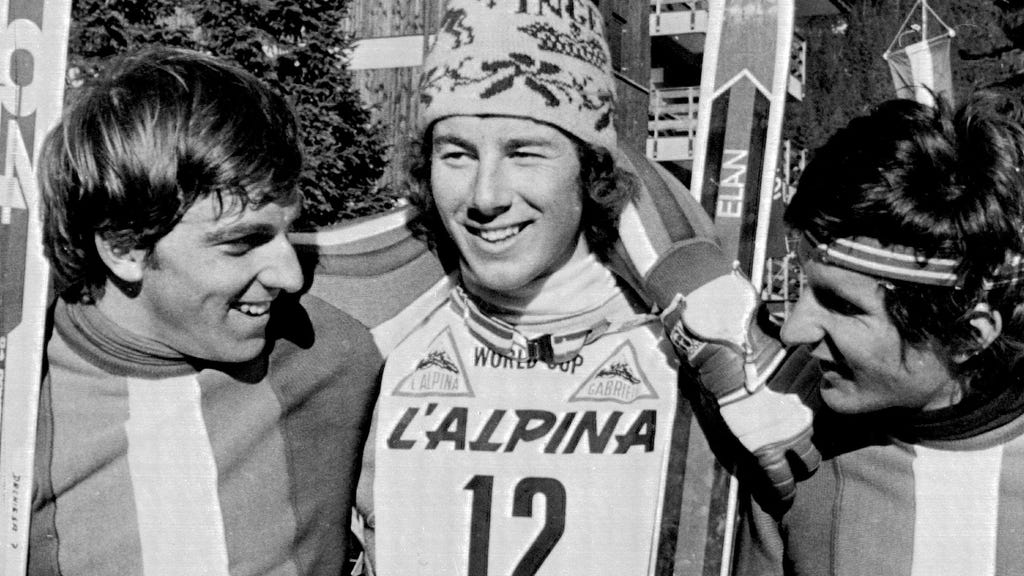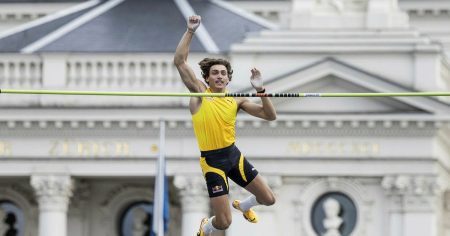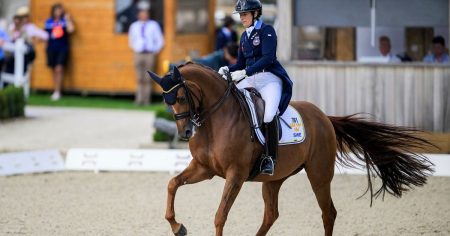Fifty years ago, on December 17, 1974, a relatively unknown Swedish skier named Ingemar Stenmark achieved his first World Cup victory in Madonna di Campiglio, Italy, marking the beginning of a legendary era in Swedish sports. While popular narratives often exaggerate the impact of the event, claiming that Sweden came to a standstill, the reality was that life continued as usual, even if Stenmark’s races became must-see TV for many. His victories captivated a nation hungry for sporting success, and even his competitors became household names in Sweden. Figures like the Frommelt brothers, Gros, Thöni, Girardelli, Zurbriggen, Heidegger, and the Mahre brothers gained recognition solely due to their association with Stenmark.
The 1974 Madonna di Campiglio slalom was a pivotal moment in Stenmark’s career. Leading up to the race, he had experienced a series of near misses, finishing on the podium but never claiming the top spot. Doubts began to creep into his mind, questioning his ability to win. The first run of the slalom did little to alleviate these concerns. He encountered trouble on the icy course, losing significant speed after hitting a gate and finishing a dismal 22nd. Despite this setback, Stenmark remained undeterred. During the inspection of the second run, he vowed to his coach, Olle Rolén, that he would ski aggressively. Rolén, in turn, relayed a message to the finish area, predicting a remarkable second run from Stenmark.
In an era before modern carving skis, Stenmark employed a distinctive technique, lifting his inside ski and pivoting around the outer one, creating a fluid and efficient descent. This elegant style, combined with his exceptional control and speed, allowed him to steadily overtake his competitors. By the time the final two skiers, Geoff Bruce and Paolo De Chiesa, prepared for their runs, Stenmark had set a formidable pace. De Chiesa, an Italian slalom specialist and Stenmark’s contemporary, held a substantial lead of 1.47 seconds after the first run. Both skiers were vying for their first World Cup victory, and the pressure was immense, particularly for De Chiesa, competing on home soil.
However, De Chiesa’s hopes were dashed as he crossed the finish line, realizing he had been beaten by Stenmark’s blistering second run. The margin of victory was a mere 0.19 seconds, a testament to Stenmark’s exceptional skill and determination. This narrow victory marked the first of Stenmark’s 86 World Cup wins, a record that still stands today. Sadly for De Chiesa, he never achieved a World Cup victory, despite coming close on several occasions. The two skiers, born in the same year and sharing a common language, developed a friendship. De Chiesa later transitioned to a career as a television commentator, continuing his involvement in the sport.
Geoff Bruce, who had led after the first run, finished fourth, his best result in World Cup competition. Third place went to Fausto Radici, an Italian skier with a distinctive appearance due to an eye injury sustained in childhood. After retiring from skiing, Radici entered the family business, overseeing a large textile company. Tragically, years later, he succumbed to depression, taking his own life in 2002. His story serves as a poignant reminder of the pressures faced by athletes, even after their competitive careers have ended.
The Madonna di Campiglio victory launched Stenmark into the international spotlight. He would go on to dominate the sport of alpine skiing for over a decade, becoming a national hero in Sweden and an icon of the sport. His remarkable career was built on a foundation of technical mastery, unwavering determination, and a quiet confidence that allowed him to overcome setbacks and achieve unprecedented success. The victory in 1974, seemingly a small event in the grand scheme of things, proved to be a turning point, not just for Stenmark’s career, but for the history of Swedish sport. It was the beginning of a legacy that continues to inspire awe and admiration today.
The story of Stenmark’s first victory is not just about a race won, but about the human drama that unfolds within the world of competitive sports. It’s about the hopes and dreams of young athletes, the pressures they face, the friendships they forge, and the lasting impact of their achievements. It reminds us that even in a sport focused on individual performance, there are countless stories interwoven, each contributing to the rich tapestry of sporting history. The 1974 Madonna di Campiglio slalom stands as a testament to the power of perseverance, the unpredictability of competition, and the enduring legacy of a true sporting legend.














